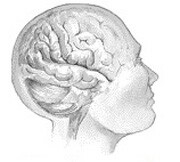- Skip Storing This Everyday Product in the Fridge Door
- Green Tea + B3 Pairing May Boost Brain Health
- Navigating Your Midlife Crisis: Embracing New Possibilities
- City Raccoons Showing Signs of Domestication
- Mapping the Exposome: Science Broadens Focus to Environmental Disease Triggers
- One Week Less on Social Media Linked to Better Mental Health
- Your Brain Changes in Stages as You Age, Study Finds
- Some Suicide Victims Show No Typical Warning Signs, Study Finds
- ByHeart Formula Faces Lawsuits After Babies Sickened With Botulism
- Switch to Vegan Diet Could Cut Your Greenhouse Gas Emissions in Half
Kids With Autism Have Extra Brain Connections, Study Says


Researchers report that children with autism appear to have excess synapses — cellular connections — in their brains compared with typical children.
The scientists also believe it might be possible to reduce the number of extra synapses through drug treatment.
Synapses are the points in the brain where brain cells (neurons) connect and communicate with each other. Having excess synapses may have a major impact on how the brain functions, theorized neuroscientists at Columbia University Medical Center in New York City.
The extra synapses in the brains of autistic children are due to a slowdown in the normal brain “pruning” process during development, the researchers believe.
“It’s the first time that anyone has looked for, and seen, a lack of pruning during development of children with autism, although lower numbers of synapses in some brain areas have been detected in brains from older patients and in mice with autistic-like behaviors,” study senior investigator, David Sulzer, a professor of neurobiology, said in a Columbia news release.
His team also found that rapamycin, an immunosuppressant that helps prevent rejection in organ transplants and coats some coronary stents, can restore normal synaptic pruning and improve autistic-like behaviors in mice. The effect was seen even when the drug was given to the mice after they developed those behaviors.
The drug causes side effects that might prevent its use in people with autism, the researchers said. However, “the fact that we can see changes in behavior suggests that autism may still be treatable after a child is diagnosed, if we can find a better drug,” Sulzer added.
For the study, he and his colleagues examined 26 brains of youngsters with autism — 13 aged 2 to 9, and 13 aged 13 to 20. All of the children had died from causes other than autism. Their brains were compared to 22 autopsied brains of children without autism.
The researchers measured “synapse density” in a small section of tissue in each brain. By late childhood, synapse density fell by about half in the brains of children without autism, but fell only 16 percent in the brains of those with autism.
The researchers also found clues about what causes the pruning defect in the brains of children with autism, according to the study, which was published online Aug. 21 in the journal Neuron.
More information
There’s more on autism at the U.S. National Institute of Neurological Disorders and Stroke.
Source: HealthDay
Copyright © 2025 HealthDay. All rights reserved.










